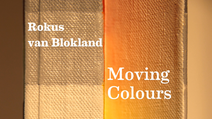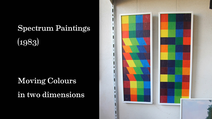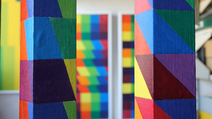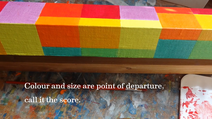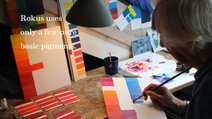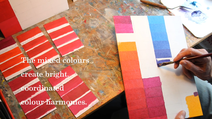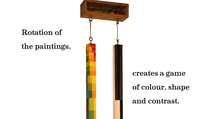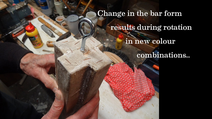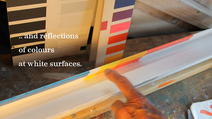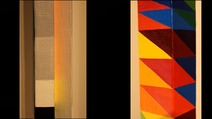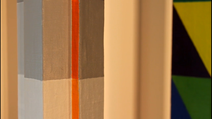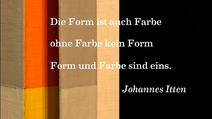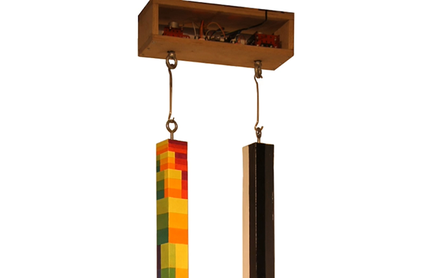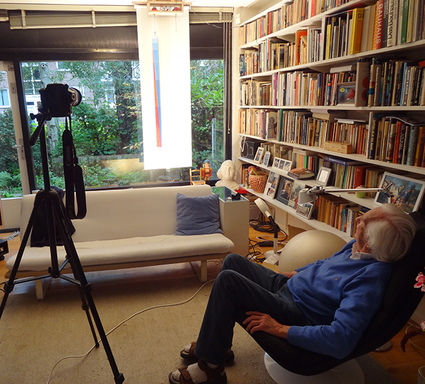Moving Colours
In Moving Colours, Rokus' earlier work comes together. His research into colour, colour sequences, contrasts, and reflection is united in his Colour Beam paintings. In Rokus' earlier spatial work, the movement of the viewer was important. Rokus says about this, Size, form, and colour change as the viewer changes position, with light and shadow playing a game. He also played this game with his work, in which reflections were important. For the viewer invisible colour patches give reflections on white surfaces or surfaces with colour.
Rokus brings these elements of movement and reflection into his Colour Beam paintings. While the first series of panels were still straight in shape, the later Colour Beams had special shapes that allowed for colour reflections.
By letting the beams rotate, everything starts moving. A play of colour, shape, contrasts and reflections emerges. Colour fields increase and decrease in size. A colour turns towards the light and becomes brighter, only to then rotate away and fade in grays.
Reflections of a still hidden colour on an adjacent white surface increase due to the rotating motion. And suddenly the entire field of colour comes into view, only to disappear again afterwards.
Colour fields lie on the same side of the beam or are shifted over the edge of the beam to a next side with its own colour spectrum. Rokus also varies with the size of the coloured areas, often in a logarithmic series, divided horizontally and/or vertically across the beam. These colour distributions form a three-dimensional continuation of his -two-dimensional- paintings.
Vimeo video
https://vimeo.com/227960171
The Vimeo video Moving Colours shows images of the play of interaction of colour, form, contrasts, and reflections.
Rotating device
The Colour Beams are attached to two bearing suspension points so that the movement can take place slowly and regularly. An Arduino mini-computer controls both and can set the speed and direction of rotating of both suspension points separately.
In this way, two Colour Beams can rotate next to each other and create a play of colour and contrast between them.
Johannes Itten
Die Form ist auch Farbe.
Ohne Farbe keine Form, ohne Form keine Farbe.
Form und Farbe sind eins.
Die am besten faßbare, bestimmbare Form ist die geometrische, deren Grundelemente der Kreis, das Quadrat, das Dreieck sind. In diesen drei Formelementen liegt jede mögliche Form keinhaft. sichtbar dem Sehenden - unsichtbar dem Nichtsehenden.
Die geometrischen Formen, die Spektralfarben sind die einfachsten, empfindlichsten, darum kräftigsten und feinsten Mittel der Darstellung eines ausdrucksvollen Formgefüges.
Quotes from Johannes Itten that were important for Rokus.
